Brain-wide associations between white matter and age highlight the role of fornix microstructure in brain ageing
- PMID: 37195079
- PMCID: PMC10258541
- DOI: 10.1002/hbm.26333
Brain-wide associations between white matter and age highlight the role of fornix microstructure in brain ageing
Abstract
Unveiling the details of white matter (WM) maturation throughout ageing is a fundamental question for understanding the ageing brain. In an extensive comparison of brain age predictions and age-associations of WM features from different diffusion approaches, we analyzed UK Biobank diffusion magnetic resonance imaging (dMRI) data across midlife and older age (N = 35,749, 44.6-82.8 years of age). Conventional and advanced dMRI approaches were consistent in predicting brain age. WM-age associations indicate a steady microstructure degeneration with increasing age from midlife to older ages. Brain age was estimated best when combining diffusion approaches, showing different aspects of WM contributing to brain age. Fornix was found as the central region for brain age predictions across diffusion approaches in complement to forceps minor as another important region. These regions exhibited a general pattern of positive associations with age for intra axonal water fractions, axial, radial diffusivities, and negative relationships with age for mean diffusivities, fractional anisotropy, kurtosis. We encourage the application of multiple dMRI approaches for detailed insights into WM, and the further investigation of fornix and forceps as potential biomarkers of brain age and ageing.
Keywords: ageing; brain age; diffusion; forceps; fornix; magnetic resonance imaging; white matter.
© 2023 The Authors. Human Brain Mapping published by Wiley Periodicals LLC.
Conflict of interest statement
OOA has received a speaker's honorarium from Lundbeck and is a cosultant to Coretechs.ai.
Figures
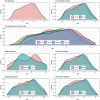

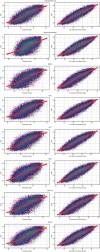
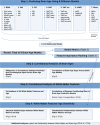
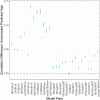
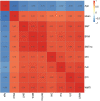




References
-
- Alzheimer's Association. (2020). Alzheimer's disease facts and figures. Alzheimer's & Dementia, 16, 391–460. - PubMed
-
- Bach, M. , Laun, F. B. , Leemans, A. , Tax, C. M. W. , Biessels, G. J. , Stieltjes, B. , & Maier‐Hein, K. H. (2014). Methodological considerations on tract‐based spatial statistics (TBSS). NeuroImage, 100, 358–369. - PubMed
-
- Barrick, T. R. , Charlton, R. A. , Clark, C. A. , & Markus, H. S. (2010). White matter structural decline in normal ageing: A prospective longitudinal study using tract‐based spatial statistics. NeuroImage, 51, 565–577. - PubMed
Publication types
MeSH terms
LinkOut - more resources
Full Text Sources

